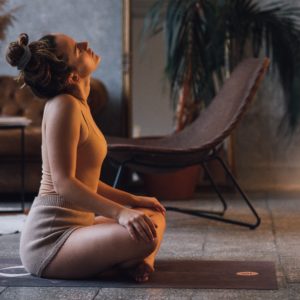Yoga Pranayama is an ancient Indian science on how to regulate breathing to calm your mind and body. ‘Prana’ is the Sanskrit word for ‘life force energy’ and ‘Yama’ is the Sanskrit word for ‘control’.
Pranayama is known as the fourth limb of yoga and involves different types of breathing exercises for the wellbeing of your body, mind, and soul. It encourages the free flow of life energy within your body, enabling the body to relax and heal. Life energy exists in all living things and objects. It’s known by multiple names – molecular energy, atomic energy, or even just pure energy from the universe. Breathing is believed to be the most subtle method of encouraging ‘Prana’ to flow through the body.
Day to day living, anxiety, and stress can affect your breathing. This makes your breathing shallower, restricting the airways and causing shortness of breath, thus diminishing the level of ‘Prana’ in the body.
Divorce is one of the most stressful periods of a person’s life. By practicing yoga pranayama, you can control the harmful effects of stress and anxiety and enable your mind and body to handle it more effectively.
Pranayama is a set of breathing exercises which you can follow below to help your body feel less anxious and more relaxed under your control. Before this, read our do’s and don’ts too for help getting ready to start the exercises.
Do's And Don'ts Whilst Practising Pranayama
- Do – Wear loose comfortable clothing.
- Do – Practice pranayama in a well-ventilated room or outside in the garden if you have one.
- Do – Switch off any devices that produce noise, such as a fan or the television, to stop you being distracted by the noise. Ensure that you’re in an environment as close to quiet as possible.
- Do – Make sure there is space around you so you don’t feel closed in.
- Do – Sit with your spine straight. You can also lie down on your back if it’s suitable for the pranayama steps you are practicing.
- Do – Relax your body.
- Do – Relax your shoulders.
- Do – Close your eyes if you can.
- Do – Empty your mind.
- Do – If you feel stress in any part of your body during pranayama, then focus on the area and direct your energy to it.
- Do – All breathing exercises with patience – slow and steady.
- Don’t – Practice pranayama with full bowels (take a quick trip to the bathroom beforehand so you don’t get distracted).
- Don’t – Practice yoga pranayama immediately after you have eaten – begin about 3 hours after a meal.
- Don’t – Practice yoga pranayama if you feel lightheaded.
- Don’t – Continue with your day straight away. When you have finished your pranayama, you must rest for a few minutes.
When Is The Best Time To Practice Pranayama?
Pranayama can be practiced at any time of the day, but the most optimum time is the morning
The 3 Pranayama Breathing Exercises - For Beginners
Honey and lemon are
Pranayama Breathing Exercise 1
- Close your mouth and place your hand on your belly.
- Slowly breathe in air through both nostrils deep into your lungs. Fill your lungs to their maximum capacity if you can. Your belly will push against your hand as you inhale. Count to 7 whilst you inhale.
- Hold and retain your breath for 7 seconds.
- Slowly exhale through the nostrils or the mouth. Your belly will pull away from your hand when you exhale. Count to 7 whilst you exhale.
- Repeat the above steps 7 times.
Pranayama Breathing Exercise 2
- Close your mouth and, using your thumb or index finger, close your left nostril.
- Slowly breathe in air through the right nostril deep into your lungs. Count to 7 whilst you inhale.
- Pinch both nostrils, hold and retain your breath for 7 seconds.
- Release the left nostril and slowly exhale. Count to 7 whilst you exhale.
- Repeat the above 4 steps, but this time close your right nostril and breathe in air through the left nostril. Once you have held your breath for 7 seconds, exhale through the right nostril.
- Repeat the above steps 7 times.
Pranayama Breathing Exercise 3
- Close your mouth and block your ears with your index fingers.
- Slowly inhale through both nostrils. Count to 7 whilst you inhale.
- As you exhale, make a humming bee sound (an ‘MMM’ sound) through your mouth. Count to 7 whilst you exhale.
- Repeat the above steps 7 times.
Share your thoughts on the pranayama breathing techniques on our forum and social media! Let us know what types of yoga you enjoy.
DISCLAIMER
Before you start any new diet, health programme, exercise routine, and ingest or topically use any oil, vitamin, mineral, product or compound, it is very important to consult your doctor, therapist or do a patch test to make sure you do not have any adverse reactions.
We do not offer any form of medical or psychological advice. The information in our wellbeing articles are offered for educational purposes only. Our wellbeing articles are not intended to diagnose, treat or prevent any disease. Thank you.



